The Intel Xeon W-3175X Review: 28 Unlocked Cores, $2999
by Ian Cutress on January 30, 2019 9:00 AM ESTGaming: Ashes Classic (DX12)
Seen as the holy child of DirectX12, Ashes of the Singularity (AoTS, or just Ashes) has been the first title to actively go explore as many of the DirectX12 features as it possibly can. Stardock, the developer behind the Nitrous engine which powers the game, has ensured that the real-time strategy title takes advantage of multiple cores and multiple graphics cards, in as many configurations as possible.
As a real-time strategy title, Ashes is all about responsiveness during both wide open shots but also concentrated battles. With DirectX12 at the helm, the ability to implement more draw calls per second allows the engine to work with substantial unit depth and effects that other RTS titles had to rely on combined draw calls to achieve, making some combined unit structures ultimately very rigid.
Stardock clearly understand the importance of an in-game benchmark, ensuring that such a tool was available and capable from day one, especially with all the additional DX12 features used and being able to characterize how they affected the title for the developer was important. The in-game benchmark performs a four minute fixed seed battle environment with a variety of shots, and outputs a vast amount of data to analyze.
For our benchmark, we run Ashes Classic: an older version of the game before the Escalation update. The reason for this is that this is easier to automate, without a splash screen, but still has a strong visual fidelity to test.
| AnandTech CPU Gaming 2019 Game List | ||||||||
| Game | Genre | Release Date | API | IGP | Low | Med | High | |
| Ashes: Classic | RTS | Mar 2016 |
DX12 | 720p Standard |
1080p Standard |
1440p Standard |
4K Standard |
|
Ashes has dropdown options for MSAA, Light Quality, Object Quality, Shading Samples, Shadow Quality, Textures, and separate options for the terrain. There are several presents, from Very Low to Extreme: we run our benchmarks at the above settings, and take the frame-time output for our average and percentile numbers.
[game list table]
All of our benchmark results can also be found in our benchmark engine, Bench.
| Ashes: Classic | IGP | Low | Medium | High |
| Average FPS | 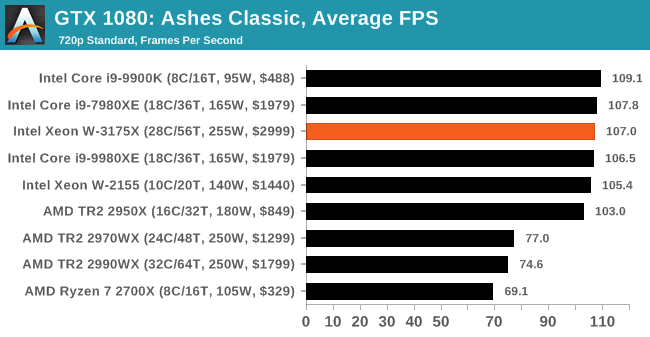 |
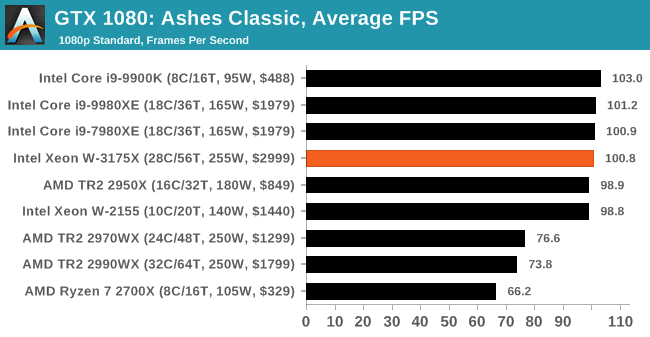 |
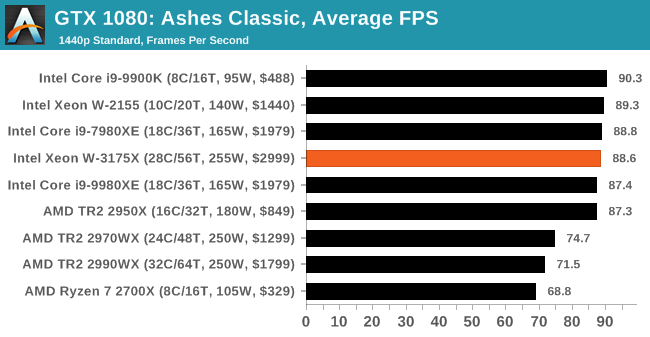 |
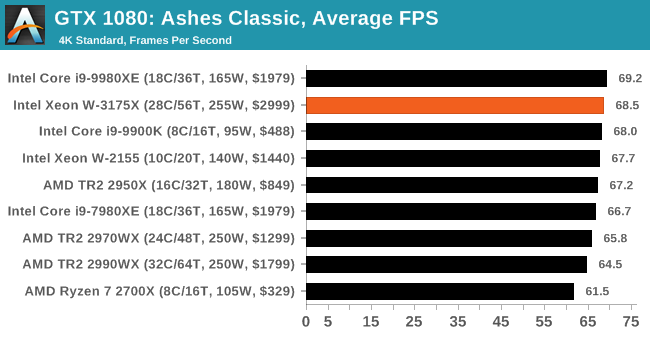 |
| 95th Percentile | 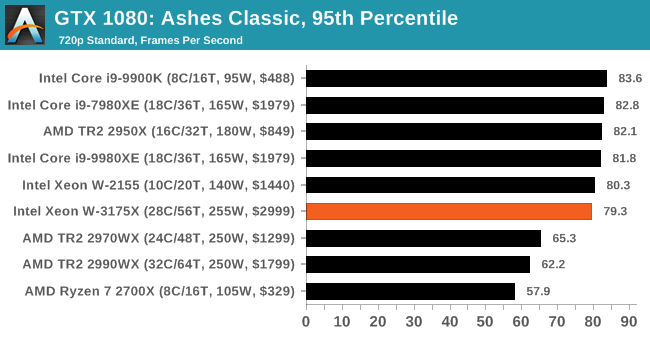 |
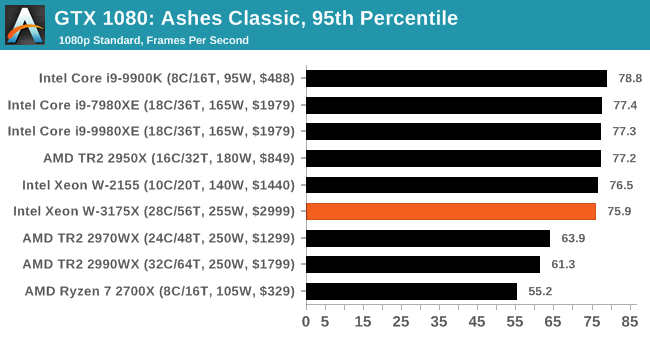 |
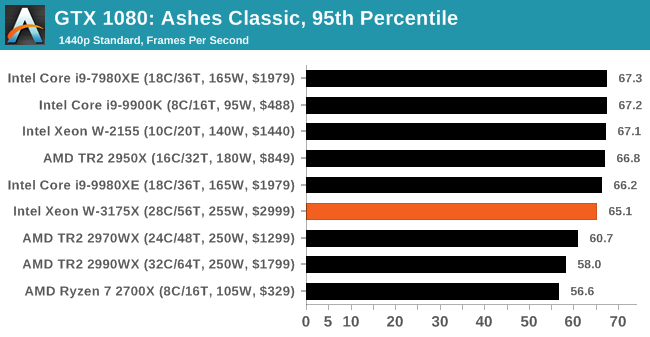 |
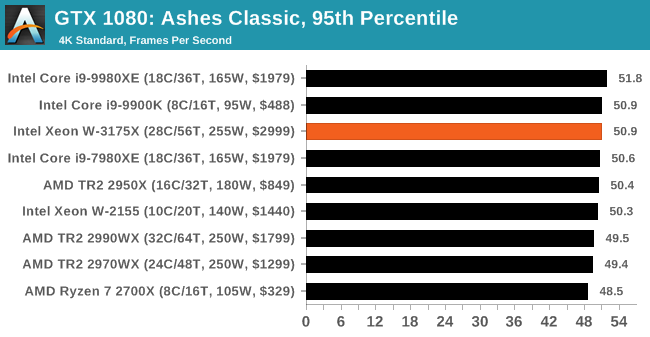 |
.


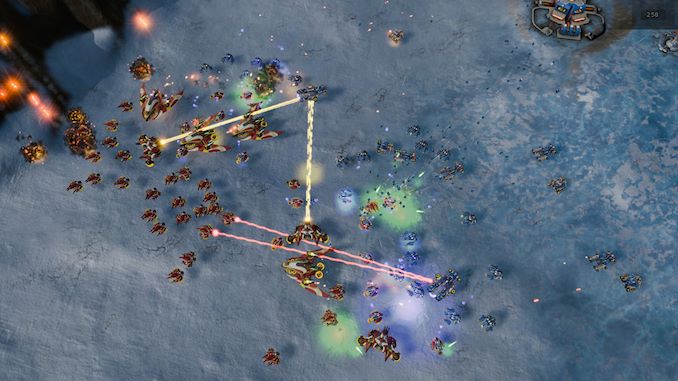









136 Comments
View All Comments
eva02langley - Thursday, January 31, 2019 - link
Forget to mention Omnium Gatherum - The Burning ColdPeachNCream - Thursday, January 31, 2019 - link
"On the power side of the equation, again the W-3175X comes in like a wrecking ball, and this baby is on fire."It's more like a Miley Cyrus licking a sledgehammer thing to me.
sgeocla - Wednesday, January 30, 2019 - link
Computex 2018: Intel 28 core 5 Ghz out by end of year.February 2019: Intel 28 core 4.5 Ghz, costs 70% more than competing product.
Intel is early on promises and late on delivery as always.
BigMamaInHouse - Wednesday, January 30, 2019 - link
The CPU is 3000$ + 1500$ MB+ ECC + eXtreme case/PSU/AIO.Thanks Ian Cutress for the honest review!
(unlike "JustBuyIt that gave this fail product(Total System) 4.5/5 rating vs 2990WX 3.5/5 because its expensive!")
Morawka - Wednesday, January 30, 2019 - link
oh wow, i didn't realize the Dominus Extreme was so expensive.tamalero - Wednesday, January 30, 2019 - link
We're getting a ton of "sponsored" BS articles lately that are cynical.eva02langley - Thursday, January 31, 2019 - link
WCCFtech gave the MSI 2080 TI lightning 1600$ GPU a 10/10 for value...FMinus - Friday, February 1, 2019 - link
RX 570 is 10/10 along with maybe the GTX 1060, everything else is going down the value ladder pretty fast from that point on. For any consumer/gaming oriented GPU that passes the $500 mark I'd give it -1/10 value score.DanNeely - Wednesday, January 30, 2019 - link
The on stage demo was using a chilled water setup, that they managed to push that system higher than Ian could with room temperature water is only to be expected.jardows2 - Wednesday, January 30, 2019 - link
This seems like a really good processor for a productivity station. I think, especially at the expected price, it would sell really well. That has me puzzled then as to why Intel would have such a limited run. The supposed figures is barely enough to send to review sites around the world, let alone have a profitable product line. If they produced 10X the amount of these, they'd probably sell them all. Why is Intel leaving easy money on the table? Something doesn't seem right about this picture.